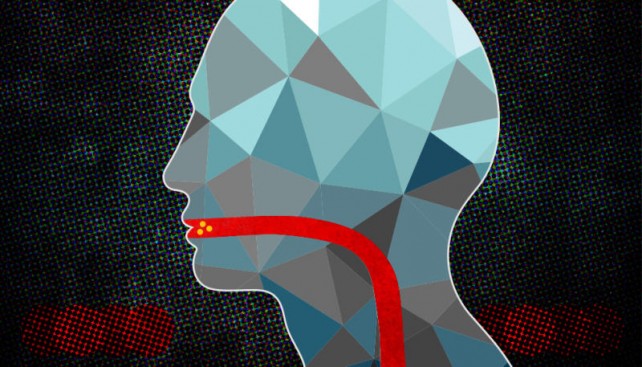We all have to admit that getting an injection is not a pleasant experience and given the opportunity we’d rather take a pill than hear those dreadful words “you might feel a slight scratch”. Consider for a moment though people who suffer from chronic diseases such as cancer or diabetes. It is often necessary for them to regularly administer their medicine intravenously. However a team of researchers from MIT and Brigham’s Women’s Hospital have created a new type of nanoparticle, giving these patients the option of taking a pill.

There are currently nanoparticles that are capable of carrying drugs successfully for a variety of diseases, including cancer but if taken orally the patient still needs an injection in order for the nanoparticles to cross the impenetrable intestinal lining to enter the bloodstream.
The new nanoparticle developed by the team led by Omid Farokhzad MD, has come about thanks to a study of how babies absorb antibodies from breast milk. When a baby ingests the antibodies, they then attach to a cell surface receptor called FcRN, which allows them to enter the bloodstream through what would normally be an impenetrable cellular barrier.
These FcRN receptors are also found in the intestinal cells of adults, so by coating the nanoparticles with Fc proteins, the particles are able to take hold of the FcRN in the intestinal lining and then slip into the bloodstream.
The researchers hope that these findings will lead to nanoparticles that have the capability of crossing other barriers within the human body, which can be used to treat other ailments such as arthritis and high cholesterol.
“It illustrates a very general concept where we can use these receptors to traffic nanoparticles that could contain pretty much anything,” said Rohit Karnik, MIT Associate Professor and one of the study’s authors. “Any molecule that has difficulty crossing the barrier could be loaded in the nanoparticle and trafficked across.”
“If you can penetrate the mucosa in the intestine, maybe next you can penetrate the mucosa in the lungs, maybe the blood-brain barrier, maybe the placental barrier,” says Farokhzad.
[Image via science daily]
No comments:
Post a Comment